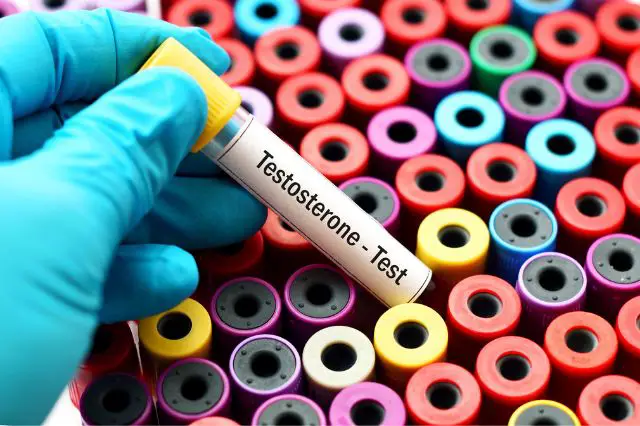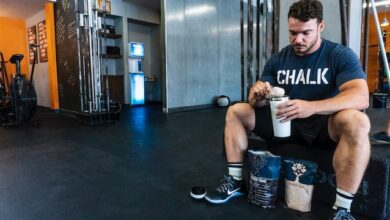Hormonal Influences on Exercise: How Testosterone and Estrogen Impact Fitness

Exercise is hugely beneficial for both physical and mental health. However, the type and amount of exercise you do can directly impact your hormone levels. In turn, hormones like testosterone and estrogen can influence your fitness regime. Understanding these hormonal influences is key to creating an exercise plan that works optimally with your body.
The Impact of Testosterone on Exercise
Testosterone that plays a vital role in building and maintaining muscle mass. When you exercise regularly, testosterone production increases, which can improve muscle growth and repair.
Higher testosterone levels achieved through exercise provide several benefits:
- Increased muscle size and strength
- More type 2 muscle fibers, responsible for power and speed
- Decreased fat mass
- Higher energy levels and libido
These testosterone-driven benefits mean you are likely able to work out harder, for longer, accelerating fitness gains. It also promotes post-workout muscle repair and growth.
The amount and type of exercise impact testosterone differently across gender and age ranges. For women, high-intensity interval training (HIIT) and heavy strength training are best for boosting testosterone. As women age, prioritizing these types of workouts becomes even more important as testosterone declines during perimenopause and menopause.
Supplements like DHEA and this bodybuilding supplement may help men and women counteract decreasing levels. However, consult your doctor before taking hormones.
How Estrogen Influences Exercise Ability
Estrogen levels are highly sensitive to both diet and exercise habits. When they are in balance, alongside nutrition and rest, moderate exercise boosts estrogen levels. However, overexercising and undereating causes them to severely plummet.
During consistent overexercise, the body goes into survival mode. It stops non-vital processes like estrogen production to conserve energy. Low estrogen levels cause hormonal disruptions like missed menstrual cycles and impaired bone health.
Since estrogen levels fluctuate during your cycle, your capacity for intense exercise shifts. During the follicular phase (days 1-14), when estrogen is lower, your body can handle intense exercise. This includes:
- High-intensity interval training (HIIT)
- Heavy weight training
- Plyometrics
- Powerlifting
However, during the luteal phase (days 15-28) when estrogen spikes, focus on lighter, restorative exercises like:
- Yoga
- Pilates
- Low-intensity cardio
- Light strength training
Estrogen and joint health are also closely connected. When estrogen drops in the first half of your cycle, your injury risk spikes. Be extra careful with activities requiring pivoting, jumping, and lateral movements. Additionally, pay special attention to form during squats, lunges, and other risky exercises.
After menopause, dropping estrogen levels cause declines in bone and muscle mass. This increases the risk of osteoporosis and injury. High-impact and resistance exercises become vital for maintaining strength and density. Consider supplements like calcium, vitamin D, and hormone therapy.
Balancing Estrogen and Testosterone Through Exercise
While typically viewed as “male” and “female” hormones respectively, both men and women require balanced levels of testosterone and estrogen for optimal health. When one hormone dominates, issues arise. Excess testosterone in women causes aggression, infertility and PCOS. Low testosterone in men leads to erectile dysfunction, depression and fatigue.
Engaging in regular, moderate exercise can help harmonize testosterone and estrogen:
- Aerobic exercise boosts testosterone in women pre-menopause while having little influence on estrogen levels
- Lifting heavy weights increases testosterone substantially compared to light weights
- Too much high-intensity exercise can drop estrogen levels and disrupt cycles
- Testosterone starts declining around age 30 for both men and women
Carefully monitoring workout strain alongside a nutrient-dense diet supports healthy testosterone and estrogen balance. Ensure adequate caloric intake to fuel demanding activity levels. Prioritize strength training to elevate testosterone while avoiding metabolic damage and adrenal fatigue from overtraining.
If you experience severe symptoms of hormonal imbalance including infertility and low libido, testing your levels and considering bioidentical hormone replacement therapy is worthwhile. Working with a specialist ensures customized treatment for restoring the balance between testosterone and estrogen long-term.
Hormonal influences make a huge impact on your capacity for exercise. Key hormones like testosterone and estrogen fluctuate across ages and stages of the menstrual cycle. Being aware of these changes and designing your fitness plans accordingly is crucial.
This ensures you avoid overtraining, imbalance, and adverse effects. Monitoring your diet, sleep and stress levels helps keep hormones balanced alongside smart exercise programming.





